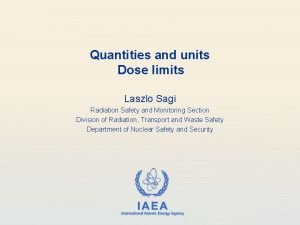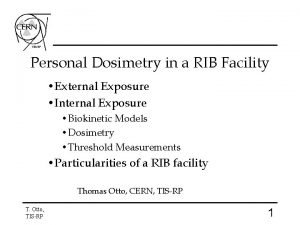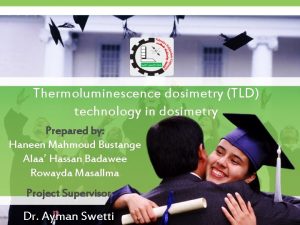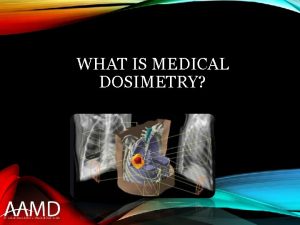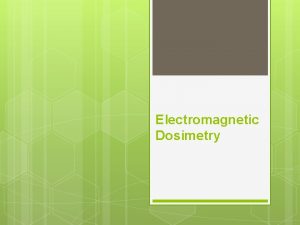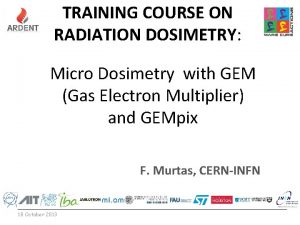Recommendations from GROUP E Dosimetry For Dosimetry 1





- Slides: 5

Recommendations from GROUP E (Dosimetry) For Dosimetry: (1) Re-analyze Apollo dosimetry data using modern techniques (nuclear emulsions and PNTDs). Provide re-evaluated dose and dose equivalent, and neutron spectra measurements for Apollo missions. (2) Dosimetric measurements on Lunar (Martian) surface using Tissue Equivalent Detectors that include both charged particle and neutron contributions to dose and dose equivalent.

Recommendations from GROUP E (Dosimetry) For SPE predictions (predictive tools for operational decisions) (3) Prediction of the next most likely SPE temporal evolution profile TH (at the selected energies), with associated probabilities. Real-time data from the actual event EXP (at the selected energies). Refine predictions in real time as the real-time data arrives. Quiet-time (all clear) forecast.

Recommendations from GROUP E (Dosimetry) Differential flux Prediction: We need particles/time/cm 2/Me. V, at various times ( ) before the event i. e. (E, t, ) (a) at 1 A. U. in free space, (b) at Mars and along the Mars trajectory Protons (H) Parameter Ranges we would like: E: 30, 60, 100, 500, 1000 Me. V t: 5 mins, from t = 0 (onset) to return to background : 0 (now), 3 hrs lead time, 6, 12 , 24 hrs. Helium (He): Parameter ranges same as above (except Me. V/n, and cut off at 500 Me. V/n) Electrons (e): Parameters as above, except: E: 0. 5 – 5. 0 Me. V

Recommendations from GROUP E (Dosimetry) FOR GCR and SPE (4) Determine the limits of the long-term variability in the space radiation environment including GCR, SPE, and Earth’s trapped radiation belts through continued research, e. g. the long-term secular changes in the GCR spectrum using 10 Be from ice cores, Voyager measurements beyond the termination shock, nitrate measurements from ice cores, and historical data, with a view to prediction. (5) Endorse the support of missions that allow US access to the necessary data to enable the above. Monitoring at L 1 is preferred because it is outside the magnetosphere, is at approximately 1 AU, and permits continuous coverage

Recommendations from GROUP E (Dosimetry) For all of the above: (6) We also need a “Technology Transfer” mechanism - i. e. how to transfer research into operational tools.
